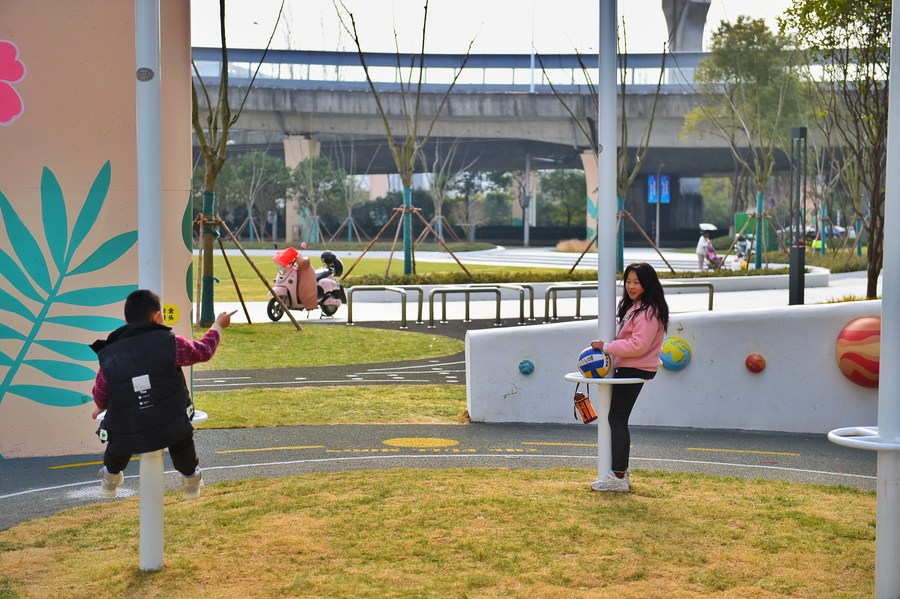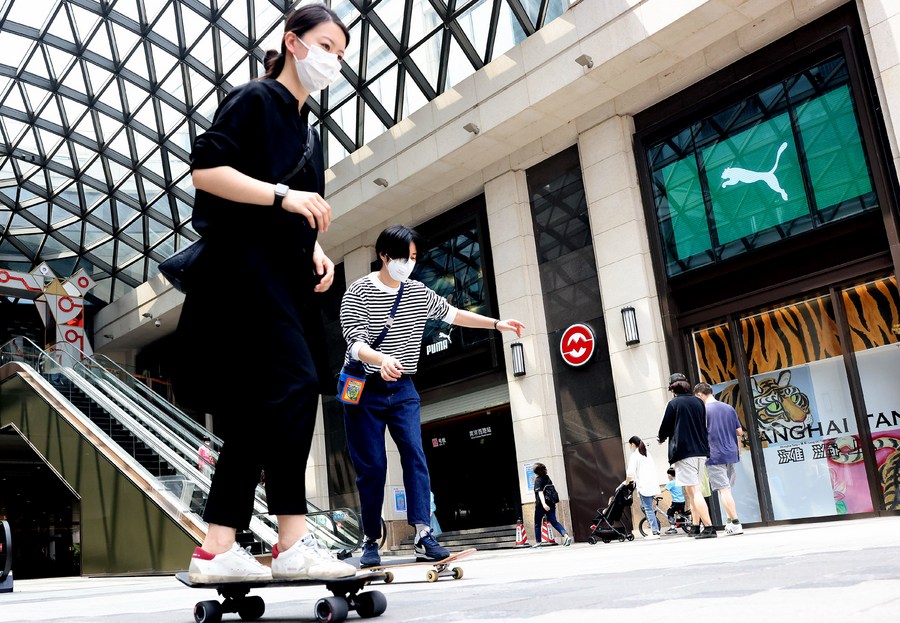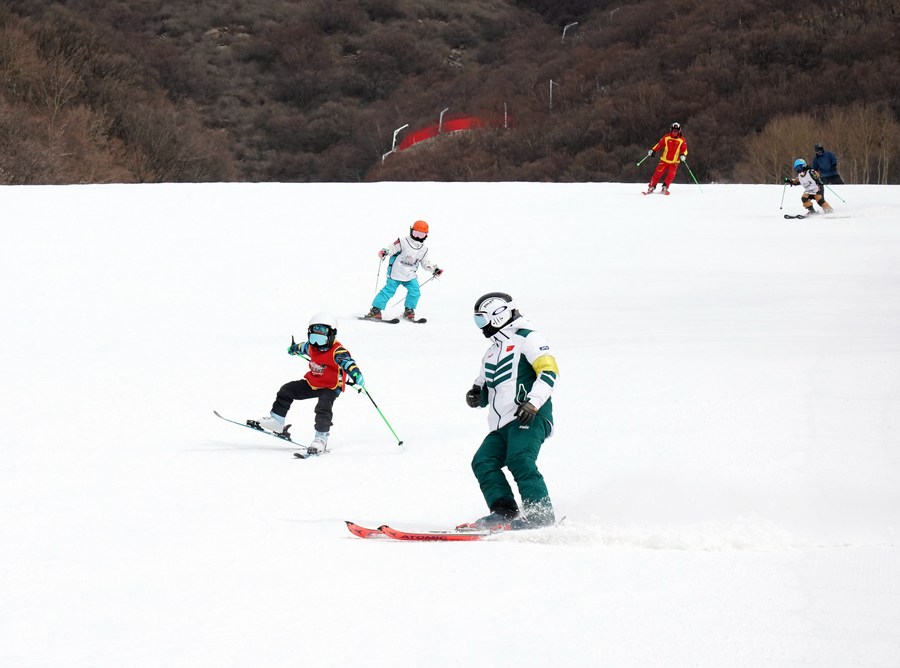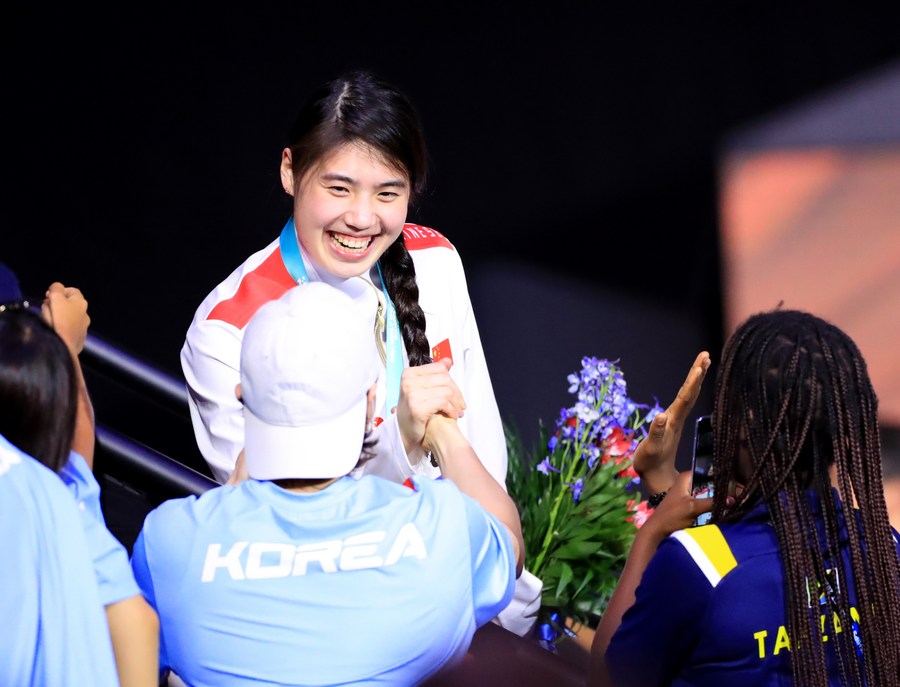China to upgrade public fitness to achieve sporting powerhouse goals-Xinhua

The photo shows two children playing in a sports park in the east Chinese city of Wuxi. (Xinhua)
China will continue to push a nationwide fitness campaign to become an athletic powerhouse.
by sports journalist He Leijing
BEIJING, March 11 (Xinhua) — Every day in the east China city of Wuxi, an amazing scene occurs where people are immersed in sports while vehicles zoom overhead.
It takes place in Wuxi’s largest sports park, built under an overpass, covering an area of 6.4 hectares and equipped with fitness facilities such as basketball courts, table tennis tables and skate parks.
“It is very creative and very convenient for both children and the elderly to do some exercise every day,” said resident Jin Hepin. “I hope more people in China can exercise right on their doorstep.”
Jin’s voice was heard. China is set to press ahead with a nationwide fitness campaign to become an athletic powerhouse, according to national lawmakers and political advisers currently convening in Beijing for the country’s annual parliamentary sessions.

Young people play skateboards at a square in Shanghai, east China, June 1, 2022. (Xinhua/Chen Fei)
FITNESS FOR EVERYONE
National fitness programs have been rolled out across China over the past five years, according to a government work report submitted to national lawmakers for deliberation on Sunday.
Various sports parks and facilities have sprung up, particularly after China proposed promoting “15-minute fitness circuits” in urban communities and offering fitness facilities that residents can walk to within 15 minutes.
According to official statistics, the per capita sports space available to Chinese people has reached 2.41 square meters, a significant increase from 1.05 square meters in 2011. More than 400 million Chinese people regularly participate in sports.
Dozens of teenagers indulge in dance training sessions in the courtyard of a middle school in Nanjing, east China’s Jiangsu Province, to the beat of fast-paced pop melodies. And less than 300 km away in the city of Nantong, nearly 2,500 students run in spectacularly changing formations that resemble the classic mobile game Snake.
“Schools are encouraged to design creative sports courses and activities that cater to the interests of students, who can ultimately utilize their athletic ability and enjoy good physical and mental health,” said Wang Zongping, a professor at Nanjing University of Science and Technology Technology.
Inspired by the Beijing 2022 Winter Olympics, more and more Chinese are taking to ice rinks and snow slopes, regardless of where they live. According to a government plan, 5,000 schools across China are expected to have winter sports in their curriculum by the end of 2025.

People enjoy skiing at the National Alpine Skiing Center in Yanqing District, Beijing, capital of China, Feb. 2, 2023. (Xinhua/Zhang Chenlin)
EVERY OUNCE OF POWER COUNTS
The rapid development of sports facilities and wide public participation have laid a solid foundation for the growth of China’s sporting power as the country strives to become a sporting powerhouse.
Ding Shizhong, a member of the National Committee of the Chinese People’s Political Consultative Conference (CPPCC), said national fitness is the key to improving overall public health and suggested more efficient use of fitness facilities.
Ding suggested that the renovation and construction of sports facilities should be included in urban renewal projects, and that the design of sports infrastructure should be considered as part of the city’s public services and park development plan.
Bao Mingxiao, also a member of the CPPCC National Committee, echoed Ding’s idea. He suggested that a newly built public park should include an outdoor sports center that includes walkways, multi-purpose ball courts and tent sites.
And people living in rural areas should also have access to adequate fitness facilities, according to National People’s Congress (NPC) MP Pei Chunliang, who recommended upgrading rural facilities and improving public services in rural areas.
Professional athletes, coaches and teachers, and physical education college students should also be encouraged to go to the countryside for fitness training and public activities, Pei added.

Zhang Yufei of China reacts after the medal ceremony for the women’s 50m butterfly final at the 19th FINA World Championships in Budapest, Hungary, June 24, 2022. (Source: Xinhua/Li Ying)
Olympic champion Zhang Yufei, also a deputy at the National People’s Congress, said she hopes more athletes will attend schools to pass on their professional experience to teenagers, adding that youth is an important force for China to become an athletic powerhouse .
“I propose that swimming lessons be integrated into schools’ physical education programs to improve physical fitness among teenagers,” said the 24-year-old top swimmer.
“As a deputy NPC, I have more responsibility to do things for the people, and I hope to grow into a big tree so that more people can enjoy my shade,” she said. ■